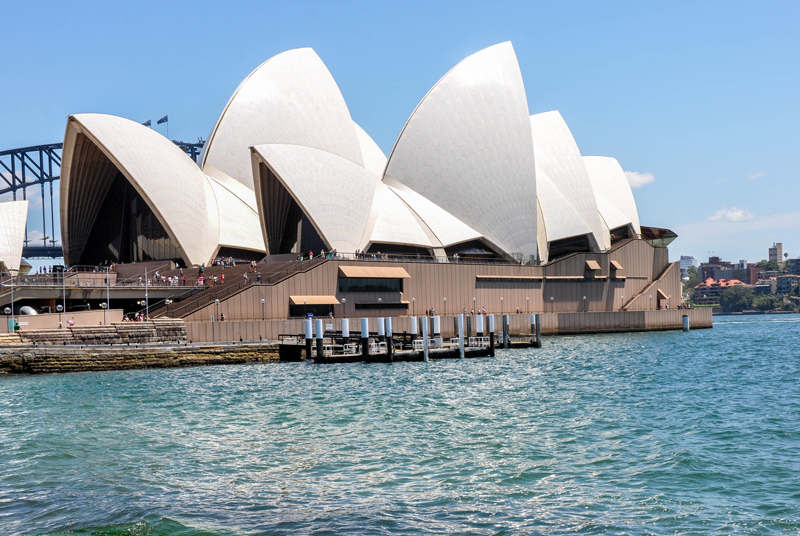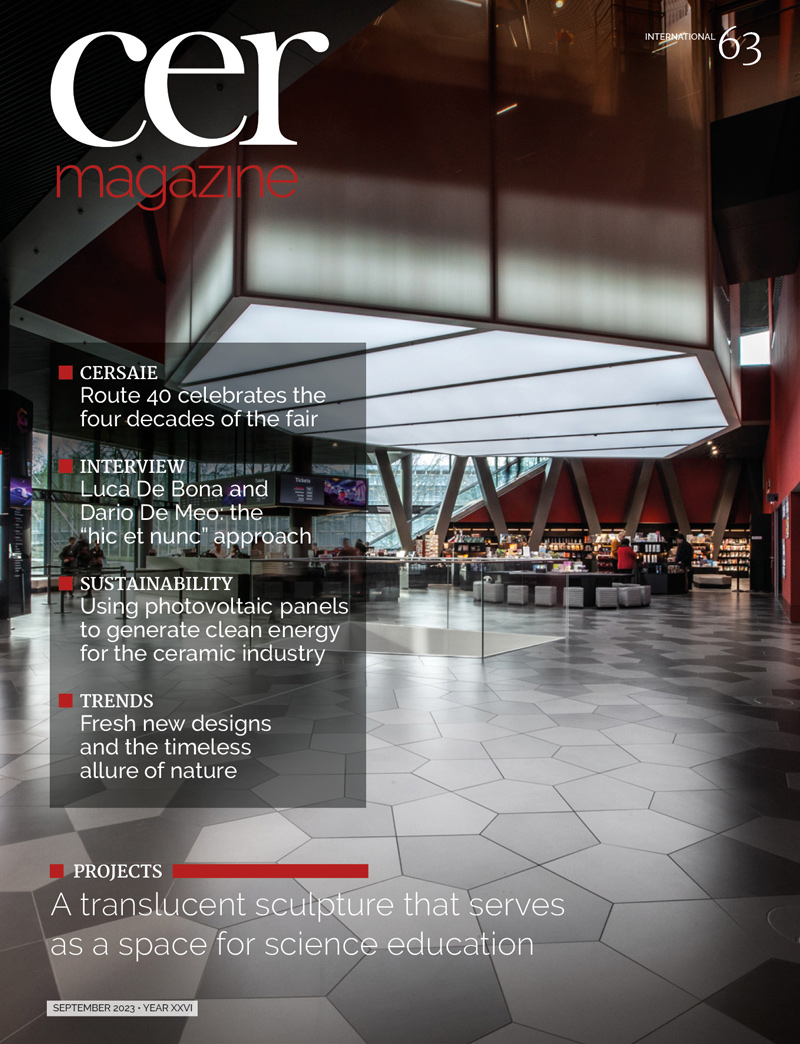The 50 years of an architectural icon and symbol of a continent
A conference will be held on Thursday 28 September in the Palazzo dei Congressi in Bologna as part of Cersaie’s Building, Dwelling, Thinking programme to celebrate the 50th anniversary of Jørn Utzon’s Sydney Opera House (1973-2023), one of the most important works of modern architecture to make extensive use of ceramic tiles. Ceramic tiles have often been considered no more than a finishing material in construction projects, but a closer look at many great works of contemporary architecture reveals their capacity for experimentation and their ability to lend an original character to the works. One of these is the Sydney Opera House.
The Sydney Opera House was built using predominantly concrete, granite, glass and ceramic materials. The famous white sails made of steel-reinforced precast concrete are clad with more than 1 million glazed ceramic tiles designed by Utzon in collaboration with the Swedish ceramic tile producer Höganäs. French architecture critic and historian Françoise Fromonot** together with other special guests will discuss this extraordinary experiment, giving participants a unique opportunity to find out more about a great work that has become one of the landmarks of modern architecture and is celebrated in particular for its use of ceramic tiles.

The Sydney Opera House (Photo by Jorge Láscar from Melbourne Australia, CC BY 2.0 Wikimedia Commons)
…(ceramic) is a wonderful material. It’s an incorruptible material.
Let us cover architecture with ceramic mosaic. Buildings too have a skin.
Let us cover architecture with diamond elements: they do not simulate a wall like facing brick, but declare their role as a covering: they give the surface a plastic value and play with the light on the sun’s circle: they are beautiful.
Gio Ponti, Loving Architecture, 1957
 ** Françoise Fromonot lectures at ENSA Paris-Belleville (architectural design, history and theory) and has taught urban planning on master’s degree courses at the École Nationale des Ponts & Chaussées and Sciences Po Paris. She has also held visiting professorships in architecture at several foreign universities including Cornell and Rice Universities (USA), the Academy of Fine Arts Vienna (Austria) and the Berlage Institute (Netherlands). In addition to numerous articles in French and international magazines (including Casabella, AV, Archis, A+, OASE and Arch+), she has published several books on contemporary architecture, including Jørn Utzon: The Sydney Opera House (1998) and Glenn Murcutt (1995, new edition 2003), published in three languages and both awarded the Prix du livre d’architecture by the Académie d’Architecture of Paris (in 1999 and 2004). She is currently working on a series of critical essays on famous buildings from modern architectural history for MIT Press.
** Françoise Fromonot lectures at ENSA Paris-Belleville (architectural design, history and theory) and has taught urban planning on master’s degree courses at the École Nationale des Ponts & Chaussées and Sciences Po Paris. She has also held visiting professorships in architecture at several foreign universities including Cornell and Rice Universities (USA), the Academy of Fine Arts Vienna (Austria) and the Berlage Institute (Netherlands). In addition to numerous articles in French and international magazines (including Casabella, AV, Archis, A+, OASE and Arch+), she has published several books on contemporary architecture, including Jørn Utzon: The Sydney Opera House (1998) and Glenn Murcutt (1995, new edition 2003), published in three languages and both awarded the Prix du livre d’architecture by the Académie d’Architecture of Paris (in 1999 and 2004). She is currently working on a series of critical essays on famous buildings from modern architectural history for MIT Press.
September 2023





